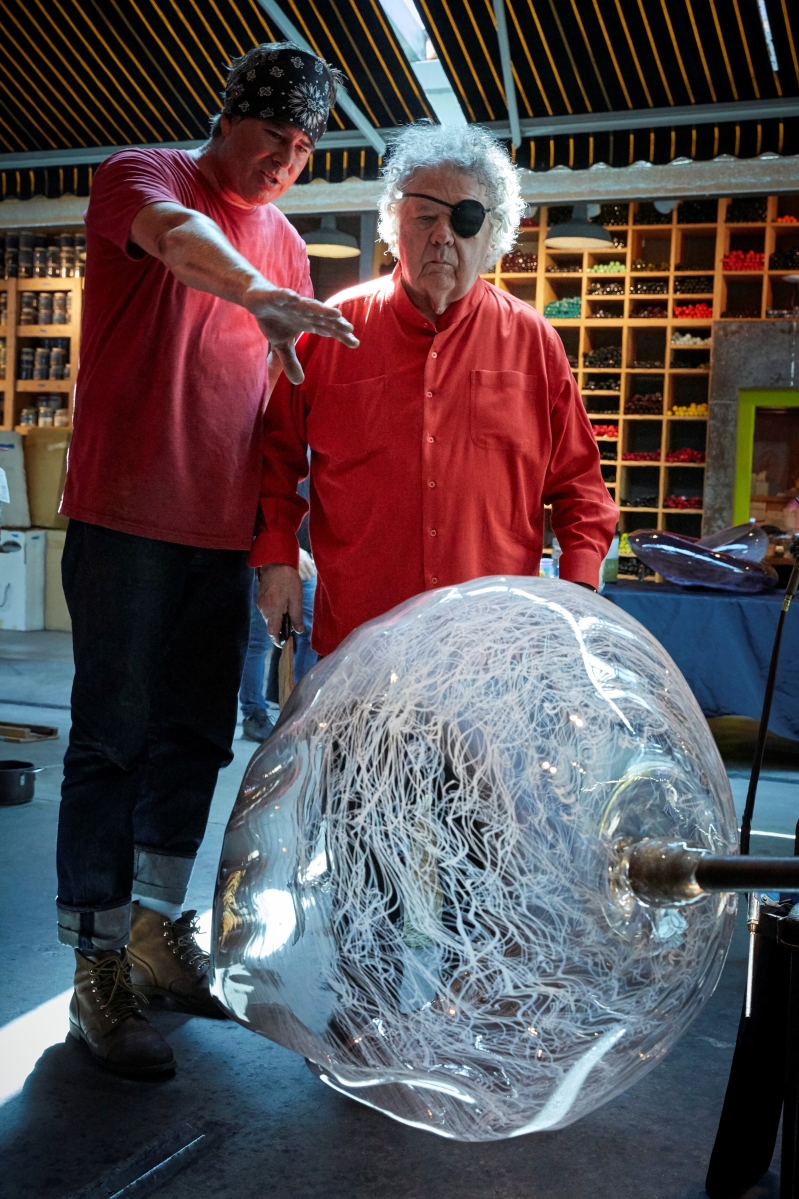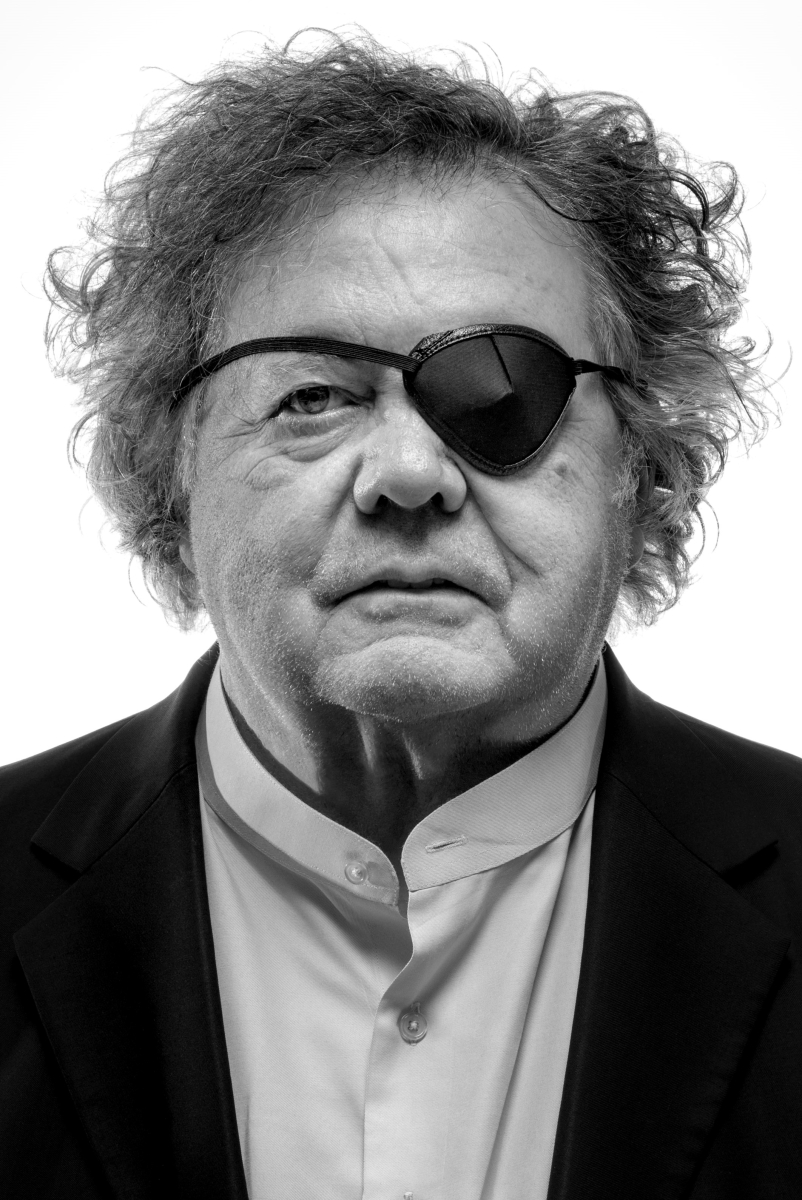The latest collection from American glass artist Dale Chihuly is inspired by a Venetian technique dating back to the Fifteenth Century. “Chihuly Merletto” unleashes the merletto caneworking technique into the modern American canon. Merletto, Italian for “lace,” has always been known for its delicate web-like pattern that forces a geometry into a glasswork. Chihuly has exploded the geometry into his signature organic forms that will debut at Seattle’s Traver Gallery on June 4 in a digital exhibition, viewable at www.travergallery.com. We sat down with Chihuly to talk about life these days and how he adapted this ancient technique into his own language.
How are you amid the pandemic?
My wife Leslie and I are staying positive and well. The biggest challenge is being isolated from the rest of our team and knowing how many people in our community and around the world are suffering in these times. We feel very lucky to be healthy and to have friends, family and colleagues who want to stay more deeply connected, albeit virtually for now.
Looking on the bright side, I’ve enjoyed exploring virtual exhibitions with our gallery partners across the globe, including our Sims Reed show in London, which has been extended through July. We’re also experimenting with the digital debut of Chihuly Merletto at Traver Gallery via online catalogs and videos.
I have always believed in the healing and uplifting power of art. Especially in difficult times, art, beauty and a strong creative community are essential.
What does a day look like for you right now?
Normally, I would be painting in my studio or working in the hotshop, but now I spend my creative energy from home. I am reflecting and gathering inspiration for future projects as well as drawing, corresponding with friends and watching favorite films to unwind. Leslie and I have also been lending our time and resources to supporting the local arts community through efforts such as the COVID-19 Artist Trust Relief Fund and Path with Art’s “Art Transforms Us” campaign.
Do you remember the first Muranese merletto piece you ever saw? What were your impressions?
I was first exposed to the merletto technique in the late ’60s when I studied glassmaking at the Venini factory on the island of Murano. I don’t recall the specific piece, but the delicacy and precision of the work was awe-inspiring. It’s very different to my own approach to working with glass, which is more organic.
Has the technique changed at all from the Fifteenth Century to your works today? Tell me how you’ve adapted it into your style.
In Chihuly Merletto, I depart from the traditional meticulousness of the classic technique to convey greater visual energy and movement. As opposed to the more static mesh-like patterns of Fifteenth Century glass from Murano, this collection is dynamic, with flexible lace patterns that flow around the basket forms.

James Mongrain and Dale Chihuly at The Boathouse hotshop, Seattle, Wash. © Chihuly Studio. All Rights Reserved. Photo Scott Mitchell Leen.
What is notable about the merletto technique?
What gives merletto its distinctive look are many fine interlocking opaque lattimo threads encased within glass cane that is then fused to a molten glass bubble and embedded into the resulting work. It’s a complex and labor-intensive process that was exciting to explore.
Did you have any help mastering it? Is it technically difficult to execute?
The technique is extremely difficult to master, labor intensive in creating, and yet the more energy we put into it, the more elegant and effortless the visual effect becomes. The finished work appears as lace moving freely across the form, but the process is a challenging artistic feat with many precise steps.
My experiments with merletto stray from the classical Venetian examples, much like my body of work in glass follows its own path, yet the inspiration is unmistakable.
An inside view into the process can be seen here: https://vimeo.com/399758970.
It’s said that for some Twentieth Century glassmakers, Scarpa for example, that some of his techniques have already been lost. Why do you think merletto endured?
As is true with any tradition, a community of people who share the joy of the activity and pass it along to others is essential in sustaining a practice . No one can say with certainty why some techniques endure and others don’t, but I believe merletto’s deep connection with Murano and its culture contributed to its long history.
What about historical Muranese techniques that have endured, any others you really admire?
There is so much to admire in the work of Venetian artists. They often start so young as apprentices and master complex skills long before art students in the United States have practiced with glass as a medium. As a student, the time I spent with Venetian glassmakers was probably the biggest influence on my own approach to glass. Not necessarily from an aesthetic perspective, but from their approach to the process, itself. My early understanding of glassblowing was that it was a solitary practice. In Murano, I was exposed to the team approach to glassblowing, which I incorporated into my own practice.
-Greg Smith





